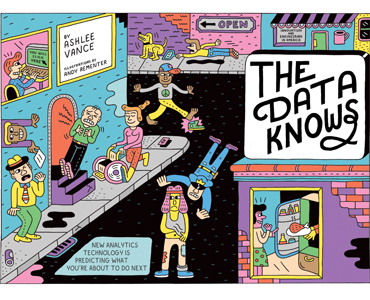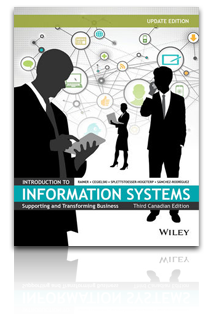Description: New analytics technology is predicting behavior—and building businesses. In the early 2000s a wave of startups made it possible to gather huge volumes of data and analyze it in record speed—à la SecureAlert. A retailer such as Macy’s (M) that once pored over last season’s sales information could shift to looking instantly at how an e-mail coupon for women’s shoes played out in different regions.
Source: BusinessWeek .com.
Date: Sept 12, 2011

Past technology worked with data that fell neatly into rows and columns—purchase dates, prices, the location of a store. Amazon.com (AMZN), for instance, would use traditional systems to track how many people bought a certain type of camera and for what price. Hadoop can handle data that don’t fit into spreadsheets. That ability, combined with Hadoop’s speedy divide-and-conquer approach to data, lets users get answers to questions they couldn’t even ask before. Retailers can dig into not just what people bought but why they bought it. Amazon can (and does) analyze its website logs to see what other items people look at before they buy that camera, how long they look at them, whether certain colors on a Web page generate more sales—and synthesize all that into real-time intelligence. Are they telling their friends about that camera? Is some new model poised to be the next big hit? “These insights don’t come super easily, but the information is there, and we do have the machine power now to process it and search for it,” says James Markarian, chief technology officer at data specialist Informatica.
Questions for discussion:
- How is new analytics technology predicting behavior different from traditional databases such as oracle?
- If an organization adopts this technology , what roles and goals of technology can be achieved by the organization


Lindsay G
1.How is new analytics technology predicting behavior different from traditional databases such as oracle?
The new analytics technolgy described in the article has focused on tracking the places that ex-convicts frequent, rather than just ensuring that those that are under house arrest are remaining in their homes. By tracking where the people under survalience are going, they can predict the likelihood of repeat offences. It has been determined, for example, that convicts that intend to reoffend will visit areas that their targets also frequent in an attempt to create a forced encounter. This technology can aide in preventing a crime before it takes place. The people monitoring a certain individual can speak directly with the ex-convict in question to possibly persuade them by reminding them they are being watched, or set of an alarm to warn possible targets. As such, SecureAlert technology has allowed law enforces to not only tract the movements of ex-convicts, but it also enables the opportunity to intervene and prevent repreat offences.
Randy Bonham
The rise of new analytical technologies has allowed business’s to gather significantly more useful data about their products, customers, and their internal operations. The data that use to require massive data mining programs that were slow and cumbersome, can now be translated into useful segments at close to real time. When you can track things that improve your sales such as website colors in relation to specific products your efficiency and effectiveness can be drastically improved. This has created, temporary as it may be, competitive advantages to companies that have adopted these new analytical technologies. It seems that through these innovations bigger companies should be able to lower costs and smaller companies should have the competitive tolls they require to compete against incumbents. This new technology will have endless applications for most business’s and the business’s that best apply analytical software should have an edge over there competition.
I find it interesting that information has become as valuable as employee’s in some business’s and has resulted in a new age of marketing. The mass amount of information available to these companies does raise some serious issues, such as how they could use the information in the future and obvious potential privacy implications. It has become ever more important to safely any information you want, or may want in the future, to be private.
Iryna Guzhva
The new analytic technology tracks those who had been convicted in the past; it tracks their behavior, the places they visit. Previously convicted people knowing that they are watched most likely would not conduct another crime.
The technology keeps track of movement previously convicted, prevent repeat crime reminding them that they are watched, it keeps under control those under house arrest.